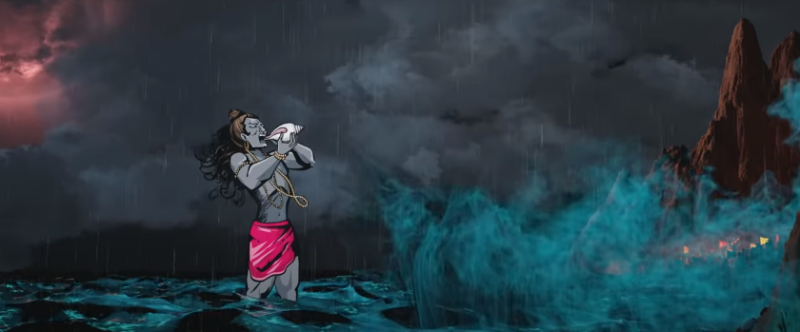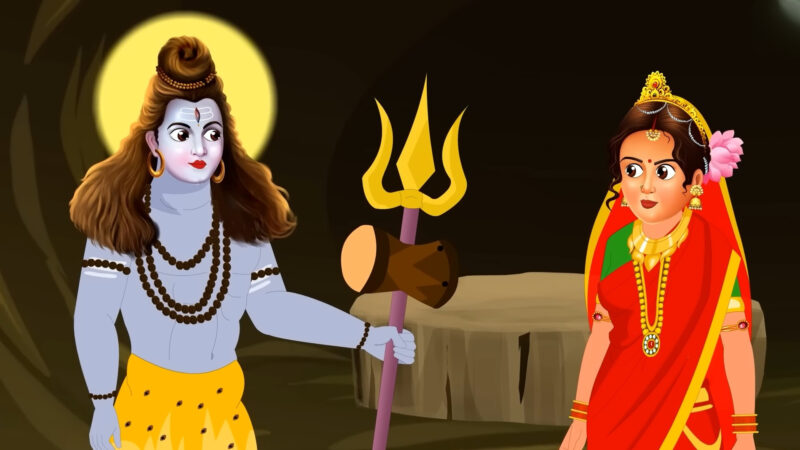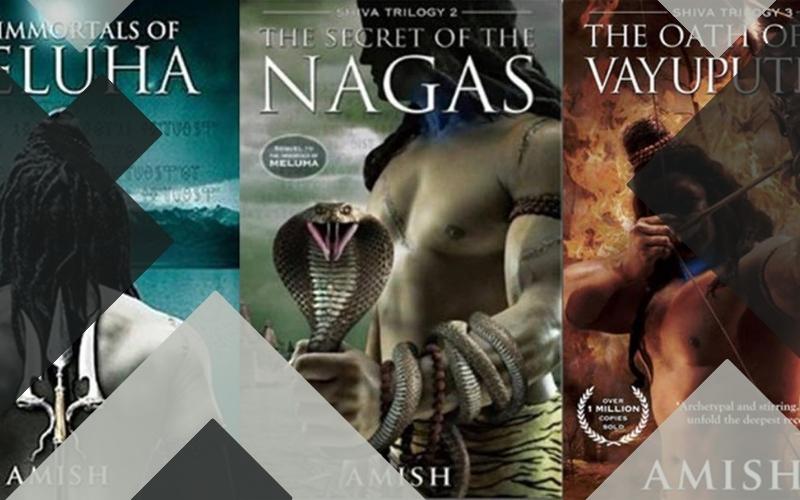Crafted with finesse by Amish Tripathi, the Shiva Trilogy stands as a testament to the power of storytelling. This series is not just a mere collection of words but a bridge that connects ancient Indian heritage to contemporary narrative techniques.
Tripathi’s unique approach transcends the conventional portrayal of deities, offering a logical perspective on the evolution of a human into a God.
From the Himalayan Highlands to the Heart of a Kingdom

The tale commences in the serene landscapes of the Himalayas, where Shiva, a tribal leader, is engrossed in a fierce battle to shield his people. His life takes a dramatic turn when Nandhi, a messenger from a powerful king in northwestern India, seeks his assistance.
Yielding to Nandhi’s plea, Shiva relocates his tribe to the bustling plains of the Indian subcontinent. An ancient prophecy comes to life when a mystical potion turns Shiva’s throat blue, leading the kingdom’s inhabitants to revere him as their prophesied savior.
This unexpected twist sets Shiva on a path of destiny, where he is no longer just a tribal leader but a beacon of hope for an entire kingdom.
Shiva: The Reformer and the Beloved

As the narrative unfolds, Shiva emerges as a visionary, challenging age-old societal norms like untouchability and the concept of karma-based punishment.
His revolutionary ideas and compassionate nature endear him to the masses. Amidst the political and social upheavals, a tender love story blossoms between Shiva and the king’s daughter.
However, love, as they say, is never easy. Shiva’s rising influence and his attempts to reform the kingdom’s practices put him at odds with the very king who once admired him.
The Clash of Ideals and the Birth of a Legend
The crux of the story revolves around Shiva’s realization of a deep-rooted evil that has plagued the kingdom for generations. His attempts to confront this malevolence lead to a rift with the king, pushing Shiva to amass an army of loyalists.
The narrative takes a heart-wrenching turn when a tragic incident claims the life of Shiva’s beloved wife. Consumed by grief and rage, Shiva resorts to a forbidden weapon, leading to cataclysmic events that reshape the destiny of the kingdom.
It is through these trials and tribulations, through his unwavering commitment to justice and righteousness, that Shiva’s legend as a God is cemented.
The Setting: A Land Steeped in Mystery
The backdrop of the Shiva Trilogy is a vividly imagined world that draws inspiration from the rich tapestry of ancient Indian civilizations.
From the snow-capped peaks of the Himalayas to the bustling cities of the Indus Valley, the series transports readers to a time when gods walked among men.
Every location described in the books, be it the serene Mansarovar Lake or the grand city of Meluha, is depicted with such detail that it becomes a character in its own right.
Characters: Beyond Black and White
One of Tripathi’s masterstrokes is his ability to humanize deities, making them relatable and real. Shiva is not just a distant god but a flesh-and-blood individual with dreams, dilemmas, and desires.
Surrounding him is a cast of characters that are multi-dimensional and complex. From the loyal Nandhi to the enigmatic Sati, each character has a story to tell, a role to play in the larger narrative.
The trilogy delves deep into their motivations, their fears, and their aspirations, making the reader empathize with, cheer for, and sometimes even despise them.
Themes: Timeless Yet Contemporary
At its core, the Shiva Trilogy grapples with questions that are as old as time itself. What is good? What is evil? Is destiny preordained, or can it be changed? While the series is rooted in mythology, it addresses issues that are startlingly contemporary.
Topics like caste discrimination, the role of women in society, and the nature of leadership are explored against the backdrop of an ancient civilization, making readers reflect on their relevance in today’s world.
The Trilogy’s Impact: Beyond the Pages
The Shiva Trilogy has not just been a commercial success; it has sparked debates, inspired adaptations, and even influenced fashion and art. Its impact can be seen in the numerous discussions it has ignited about the reinterpretation of mythology.
The books have also paved the way for a new genre of Indian writing, where ancient tales are retold with a contemporary twist.
Conclusion: A Must-Read Epic
For those on a quest for a gripping tale that seamlessly blends mythology with fiction, the Shiva Trilogy is a treasure trove.
While this summary provides a glimpse into the saga, the actual books – “The Immortals of Meluha,” “The Secret of the Nagas,” and “The Oath of the Vayuputras” – promise a literary journey that is both enlightening and enthralling.
Dive into the world crafted by Amish Tripathi and witness the metamorphosis of a man into a legend.

